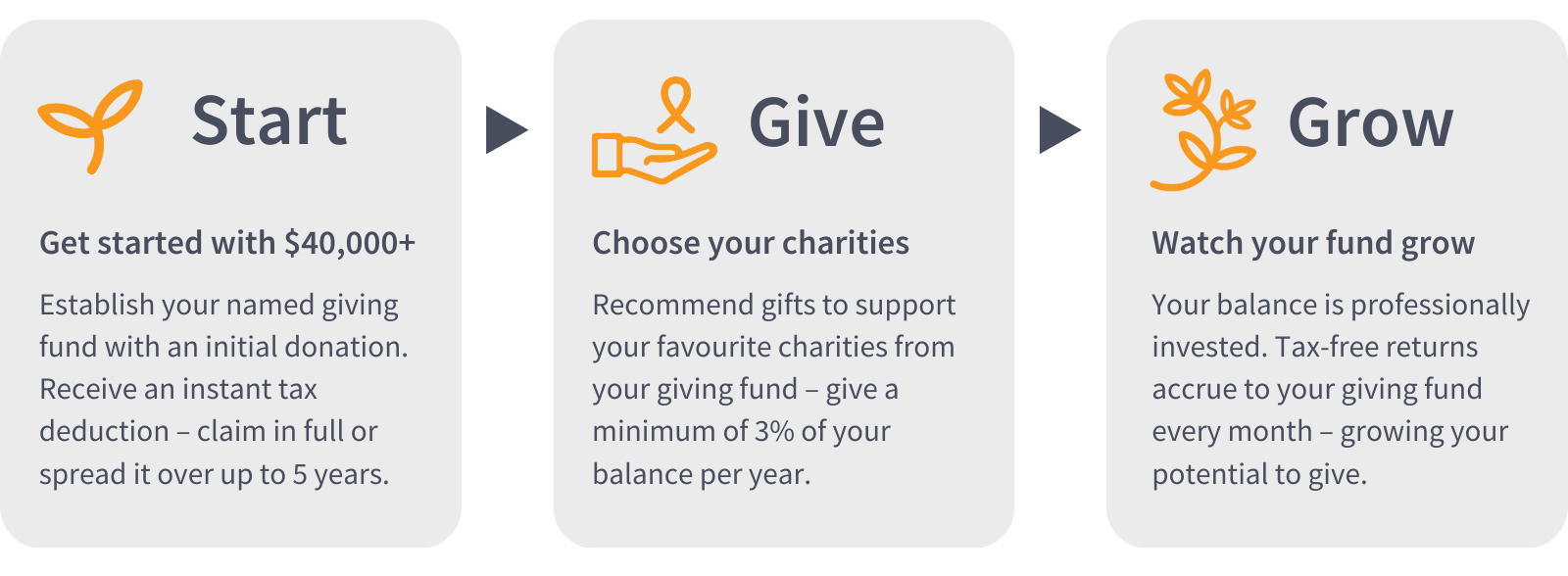Simplify your giving with just one donation that can support your favourite causes. Receive an immediate tax deduction for your donation, and the flexibility to distribute the balance to your preferred charities over time. The balance then grows through tax-free investment returns to help you give more, for longer.
Make your charity donations go further
‘Structured giving’ refers to larger-scale charitable giving or philanthropy using purposed giving vehicles such as ancillary funds, charitable trusts, bequests, testamentary or other legacy trusts.
The two most common giving structures are private and public ancillary funds. They allow givers to set aside a lump sum for charity into a fund or structure so it can be invested and grow for the future use of the community, during a founder’s lifetime and often beyond. They also provide givers with unique tax benefits.
Offsetting a capital gain is a common trigger for people to make the decision to structure their giving. A financial windfall such as an inheritance or bonus, or the sale of a business or significant asset, can be the opportunity that people are looking for to be able to establish a PAF or giving fund.
In Australia, people can claim an immediate tax deduction on donations made to an ancillary fund. They can spread the deduction over five years and have the flexibility to distribute the funds to registered DGR Item 1 charities over time.
The tax benefits of a giving fund
A giving fund (also known as a sub-fund) in a public ancillary fund (PuAF) such as the APS Foundation provides unique tax benefits and has the potential to grow your giving over time. In the APS Foundation, pooled investment returns are tax-free and accrue to your fund monthly, offering a style of giving that allows you to both give and grow money for charity.
APS can establish a giving fund in 24 hours (even just a few days before 30 June) and there’s no set-up cost.
The tax benefits of a private ancillary fund (PAF)
A private ancillary fund (PAF) is a type of charitable trust that offers an effective and strategic way to manage your philanthropy. As well as being a rewarding way for givers to support the wider community, there are also fundamental financial benefits through using this structure.
When a PAF is established, the initial and subsequent donations are tax-deductible. The funds and investments in the PAF are tax-exempt and franking credits are refunded, so the philanthropic dollar goes even further. The money set aside for giving in a PAF is often invested in perpetuity, an ideal environment for long-term investing.
Establishing a PAF with APS takes four to six weeks, so it’s best to reach out sooner rather than later to if you need to meet a 30 June deadline.


